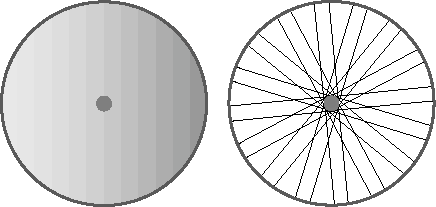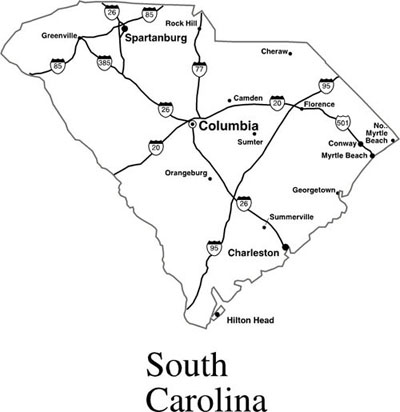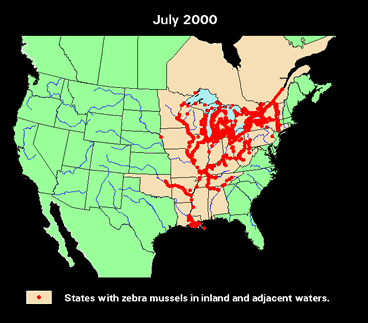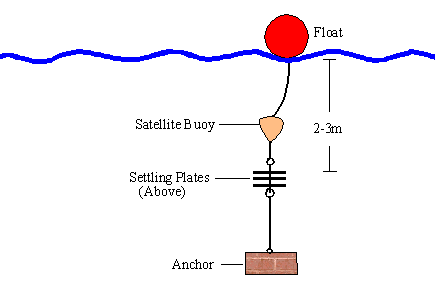目录
2001 年美国大学生数学建模竞赛 MCM、ICM 试题
2001 MCM A: Choosing a Bicycle Wheel
Cyclists have different types of wheels they can use on their bicycles. The two basic types of wheels are those constructed using wire spokes and those constructed of a solid disk (see Figure 1) The spoked wheels are lighter, but the solid wheels are more aerodynamic. A solid wheel is never used on the front for a road race but can be used on the rear of the bike.
Professional cyclists look at a racecourse and make an educated guess as to what kind of wheels should be used. The decision is based on the number and steepness of the hills, the weather, wind speed, the competition, and other considerations. The director sportif of your favorite team would like to have a better system in place and has asked your team for information to help determine what kind of wheel should be used for a given course.
Figure 1: A solid wheel is shown on the left and a spoked wheel is shown on the right.
The director sportif needs specific information to help make a decision and has asked your team to accomplish the tasks listed below. For each of the tasks assume that the same spoked wheel will always be used on the front but there is a choice of wheels for the rear.
- Task 1. Provide a table giving the wind speed at which the power required for a solid rear wheel is less than for a spoked rear wheel. The table should include the wind speeds for different road grades starting from zero percent to ten percent in one percent increments. (Road grade is defined to be the ratio of the total rise of a hill divided by the length of the road. If the hill is viewed as a triangle, the grade is the sine of the angle at the bottom of the hill.) A rider starts at the bottom of the hill at a speed of 45 kph, and the deceleration of the rider is proportional to the road grade. A rider will lose about 8 kph for a five percent grade over 100 meters.
- Task 2. Provide an example of how the table could be used for a specific time trial course.
- Task 3. Determine if the table is an adequate means for deciding on the wheel configuration and offer other suggestions as to how to make this decision.
2001 MCM B: Escaping a Hurricane's Wrath (An Ill Wind...)
Evacuating the coast of South Carolina ahead of the predicted landfall of Hurricane Floyd in 1999 led to a monumental traffic jam. Traffic slowed to a standstill on Interstate I-26, which is the principal route going inland from Charleston to the relatively safe haven of Columbia in the center of the state. What is normally an easy two-hour drive took up to 18 hours to complete. Many cars simply ran out of gas along the way. Fortunately, Floyd turned north and spared the state this time, but the public outcry is forcing state officials to find ways to avoid a repeat of this traffic nightmare.
The principal proposal put forth to deal with this problem is the reversal of traffic on I-26, so that both sides, including the coastal-bound lanes, have traffic headed inland from Charleston to Columbia. Plans to carry this out have been prepared (and posted on the Web) by the South Carolina Emergency Preparedness Division. Traffic reversal on principal roads leading inland from Myrtle Beach and Hilton Head is also planned.
A simplified map of South Carolina is shown. Charleston has approximately 500,000 people, Myrtle Beach has about 200,000 people, and another 250,000 people are spread out along the rest of the coastal strip. (More accurate data, if sought, are widely available.)
The interstates have two lanes of traffic in each direction except in the metropolitan areas where they have three. Columbia, another metro area of around 500,000 people, does not have sufficient hotel space to accommodate the evacuees (including some coming from farther north by other routes), so some traffic continues outbound on I-26 towards Spartanburg; on I-77 north to Charlotte; and on I-20 east to Atlanta. In 1999, traffic leaving Columbia going northwest was moving only very slowly. Construct a model for the problem to investigate what strategies may reduce the congestion observed in 1999. Here are the questions that need to be addressed:
- Under what conditions does the plan for turning the two coastal-bound lanes of I-26 into two lanes of Columbia-bound traffic, essentially turning the entire I-26 into one-way traffic, significantly improve evacuation traffic flow?
- In 1999, the simultaneous evacuation of the state's entire coastal region was ordered. Would the evacuation traffic flow improve under an alternative strategy that staggers the evacuation, perhaps county-by-county over some time period consistent with the pattern of how hurricanes affect the coast?
- Several smaller highways besides I-26 extend inland from the coast. Under what conditions would it improve evacuation flow to turn around traffic on these?
- What effect would it have on evacuation flow to establish more temporary shelters in Columbia, to reduce the traffic leaving Columbia?
- In 1999, many families leaving the coast brought along their boats, campers, and motor homes. Many drove all of their cars. Under what conditions should there be restrictions on vehicle types or numbers of vehicles brought in order to guarantee timely evacuation?
- It has been suggested that in 1999 some of the coastal residents of Georgia and Florida, who were fleeing the earlier predicted landfalls of Hurricane Floyd to the south, came up I-95 and compounded the traffic problems. How big an impact can they have on the evacuation traffic flow? Clearly identify what measures of performance are used to compare strategies. Required: Prepare a short newspaper article, not to exceed two pages, explaining the results and conclusions of your study to the public.
Clearly identify what measures of performance are used to compare strategies.
Required: Prepare a short newspaper article, not to exceed two pages, explaining the results and conclusions of your study to the public.
2001 ICM: Our Waterways - An Uncertain Future
Zebra mussels, Dreissena polymorpha, are small, fingernail-sized, freshwater mollusks unintentionally introduced to North America via ballast water from a transoceanic vessel. Since their introduction in the mid 1980s, they have spread through all of the Great Lakes and to an increasing number of inland waterways in the United States and Canada. Zebra mussels colonize on various surfaces, such as docks, boat hulls, commercial fishing nets, water intake pipes and valves, native mollusks and other zebra mussels. Their only known predators, some diving ducks, freshwater drum, carp, and sturgeon, are not numerous enough to have a significant effect on them. Zebra mussels have significantly impacted the Great Lakes ecosystem and economy. Many communities are trying to control or eliminate these aquatic pests. SOURCE: Great Lakes Sea Grant Network http://www.sgnis.org/.
Researchers are attempting to identify the environmental variables related to the zebra mussel infestation in North American waterways. The relevant factors that may limit or prevent the spread of the zebra mussel are uncertain. You will have access to some reference data to include listings of several chemicals and substances in the water system that may affect the spread of the zebra mussel throughout waterways. Additionally, you can assume individual zebra mussels grow at a rate of 15 millimeters per year with a life span between 4 - 6 years. The typical mussel can filter 1 liter of water each day.
Requirement A: Discuss environmental factors that could influence the spread of zebra mussels.
Requirement B: Utilizing the chemical data provided at: http://www.comap/undergraduate/contests/icm/imagesdata/LakeAChem1.xls, and the mussel population data provided at: http://www.comap/undergraduate/contests/icm/imagesdata/LakeAPopulation1.xls model the population growth of zebra mussels in Lake A. Be sure to review the Information about the collection of the zebra mussel data.
Requirement C: Utilizing additional data on Lake A from another scientist provided at : http://www.comap/undergraduate/contests/icm/imagesdata/LakeAChem2.xls and additional mussel population data provided at: http://www.comap/undergraduate/contests/icm/imagesdata/LakeAPopulation2.xls corroborate the reasonableness of your model from Requirement B. As a result of this additional data, adjust your earlier model. Analyze the performance of your model. Discuss the sensitivity of your model.
Requirement D: Utilizing the Chemical data from two lakes (Lake B and Lake C) in the United States provided at http://www.comap/undergraduate/contests/icm/imagesdata/LakeB.xls and http://www.comap/undergraduate/contests/icm/imagesdata/LakeC.xls determine if these lakes are vulnerable to the spread of zebra mussels. Discuss your prediction.
Requirement E: The community in the vicinity of Lake B (in requirement D) is considering specific policies for the de-icing of roadways near the lake during the winter season. Provide guidance to the local government officials regarding a policy on “de-icing agents.” In your guidance include predictions on the long-term impact of de-icing on the zebra mussel population.
Requirement F: It has been recommended by a local community in the United States to introduce round goby fish. Zebra mussels are not often eaten by native fish species so they represent a dead end ecologically. However, round gobies greater than 100 mm feed almost exclusively on zebra mussels. Ironically, because of habitat destruction, the goby is endangered in its native habitat of the Black and Caspian Seas in Russia. In addition to your technical report, include a carefully crafted report (3-page maximum) written explicitly for the local community leaders that responds to their recommendation to introduce the round goby. Also suggest ways to help reduce the growth of the mussel within and among waterways.
Information about the collection of the zebra mussel data
The developmental state of the Zebra mussel is categorized by three stages: veligers (larvae), settling juveniles, and adults. Veligers (microscopic zebra mussel larvae) are free-swimming, suspended in the water for one to three weeks, after which they begin searching for a hard surface to attach to and begin their adult life. Looking for zebra mussel veligers is difficult because they are not easily visible by the naked eye. Settled juvenile zebra mussels can be felt on smooth surfaces like boats and motors. An advanced zebra mussel infestation can cover a surface, even forming thick mats sometimes reaching very high densities. The density of juveniles was determined along the lake using three 15×15 cm settling plates. The top plate remained in the water for the entire sampling season (S - seasonal) to estimate seasonal accumulation. The middle and bottom plates are collected after specific periods (A – alternating ) of time denoted by “Lake Days” in the data files.
The settling plates are placed under the microscope and all juveniles on the undersides of the plate are counted and densities are reported as juveniles/m^2.





